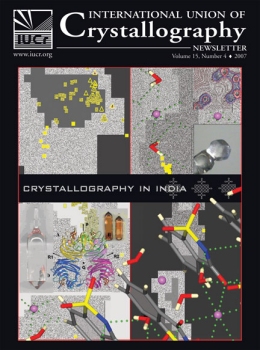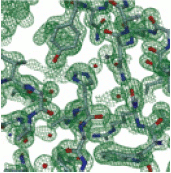
The design for the cover (courtesy Sita Lakshminarayan), has been inspired by the Ramachandran plot. Its classic quadrants contain and constrain illustrations (clockwise from top right) of the most accurate charge density measurement of a C–H···O interaction done in India, a recent hot result (spherical salt), our most complex small molecule structure to date (sodium saccharin dihydrate, V=15000 Å3), one of our first protein structures (peanut lectin, 1980) and one of the larger crystals grown in India (for radiochemical purposes). The intricate motifs on the horizontal axis are kolam (Tamil), auspicious threshold designs that welcome a guest into an Indian home. Each pattern is drawn in a continuous line incorporating symmetry and infinity, themes dear to crystallographers. This particular image is known as Brahma’s knot, in itself supposed to be the ultimate in complexity, but now a recurring topic in contemporary scientific thought. The title is in Bank Gothic font, in use since the 1930’s, that is, as long as crystallography has been practised in India. For information please contact the artist at sita_lakshminarayan@yahoo.com.












